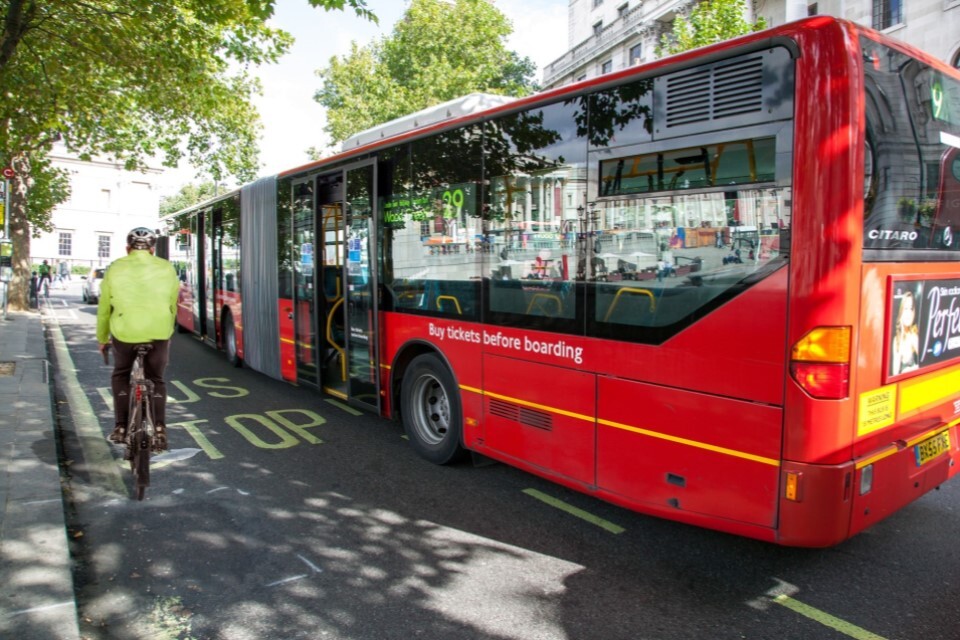Active Skills Hub Learning Portal
Strengthen your skills with flexible training provided in partnership with UK Coaching.

From 29 January 2022, the rules for all types of road users changed and were updated in The Highway Code.
The changes have come into effect to improve the safety of people walking, cycling and riding horses, and there are 8 main changes you need to know before you set off on the roads.
The introduction section of The Highway Code has been updated to include 3 new rules about the new hierarchy of road users. The hierarchy places those road users most at risk at the top; pedestrians, cyclists and horse riders. It’s important that all road users:
The updated code clarifies that when people are crossing or waiting to cross at a junction, other traffic should give way.
If people have started crossing and traffic wants to turn into the road, the pedestrian has priority and the traffic should give way.
Drivers, motorcyclists and cyclists must give way to people on a zebra crossing and people walking and cycling on a parallel crossing.
A parallel crossing is similar to a zebra crossing but includes a cycle route alongside the black and white stripes.
There is new guidance in the code about routes and spaces which are shared by people walking, cycling and riding horses.
People cycling, riding a horse or driving a horse-drawn vehicle should respect the safety of people walking in these spaces, but people walking should also take care not to obstruct or endanger them.
People cycling are asked to:
There is updated guidance for people cycling about positioning themselves which includes:
The updated code explains that people cycling in groups:
People cycling are asked to be aware of people driving behind them and allow them to overtake (for example, by moving into single file or stopping) when it’s safe to do so.
The updated code explains that people cycling should:
There is updated guidance on safe passing distances and speeds for people driving or riding a motorcycle when overtaking vulnerable road users, including:
Wait behind them and do not overtake if it’s unsafe or not possible to meet these clearances.
The updated code confirms that people cycling may pass slower-moving or stationary traffic on their right or left.
They should proceed with caution as people driving may not be able to see them. This is particularly important:
The code has been updated to clarify that when turning into or out of a side road, people cycling should give way to people walking who are crossing or waiting to cross.
There is new advice about new special cycle facilities at some junctions.
Some junctions now include small cycle traffic lights at eye-level height, which may allow cyclists to move separately from or before other traffic. People cycling are encouraged to use these facilities where they make their journey safer and easier.
There is also new guidance for people cycling at junctions with no separate facilities.
The code recommends that people cycling should proceed as if they were driving a vehicle where there are no separate cyclist facilities. This includes positioning themselves in the centre of their chosen lane, where they feel able to do this safely. This is to:
The code now includes advice for people cycling using junctions where signs and markings tell them to turn right in 2 stages. These are:
The code clarifies that when people cycling are going straight ahead at a junction, they have priority over traffic waiting to turn into or out of a side road unless road signs or markings indicate otherwise.
People cycling are asked to watch out for people driving intending to turn across their path, as people driving ahead may not be able to see them.
The code has been updated to clarify that people driving or riding a motorcycle should give priority to people cycling on roundabouts. The new guidance will say people driving and or riding a motorcycle should:
The code already explained that people cycling, riding a horse and driving a horse-drawn vehicle may stay in the left-hand lane of a roundabout when they intend to continue across or around the roundabout.
Guidance has been added to explain that people driving should take extra care when entering a roundabout to make sure they do not cut across people cycling, riding a horse or driving a horse-drawn vehicle who are continuing around the roundabout in the left-hand lane.
The code recommends a new technique when leaving vehicles. It’s sometimes called the ‘Dutch Reach’.
Where people driving or passengers in a vehicle can do so, they should open the door using their hand on the opposite side to the door they are opening. For example, using their left hand to open a door on their right-hand side.
This will make them turn their head to look over their shoulder behind them. They’re then less likely to cause injury to:
For the first time, the code includes guidance about using electric vehicle charging points.
When using one, people should: